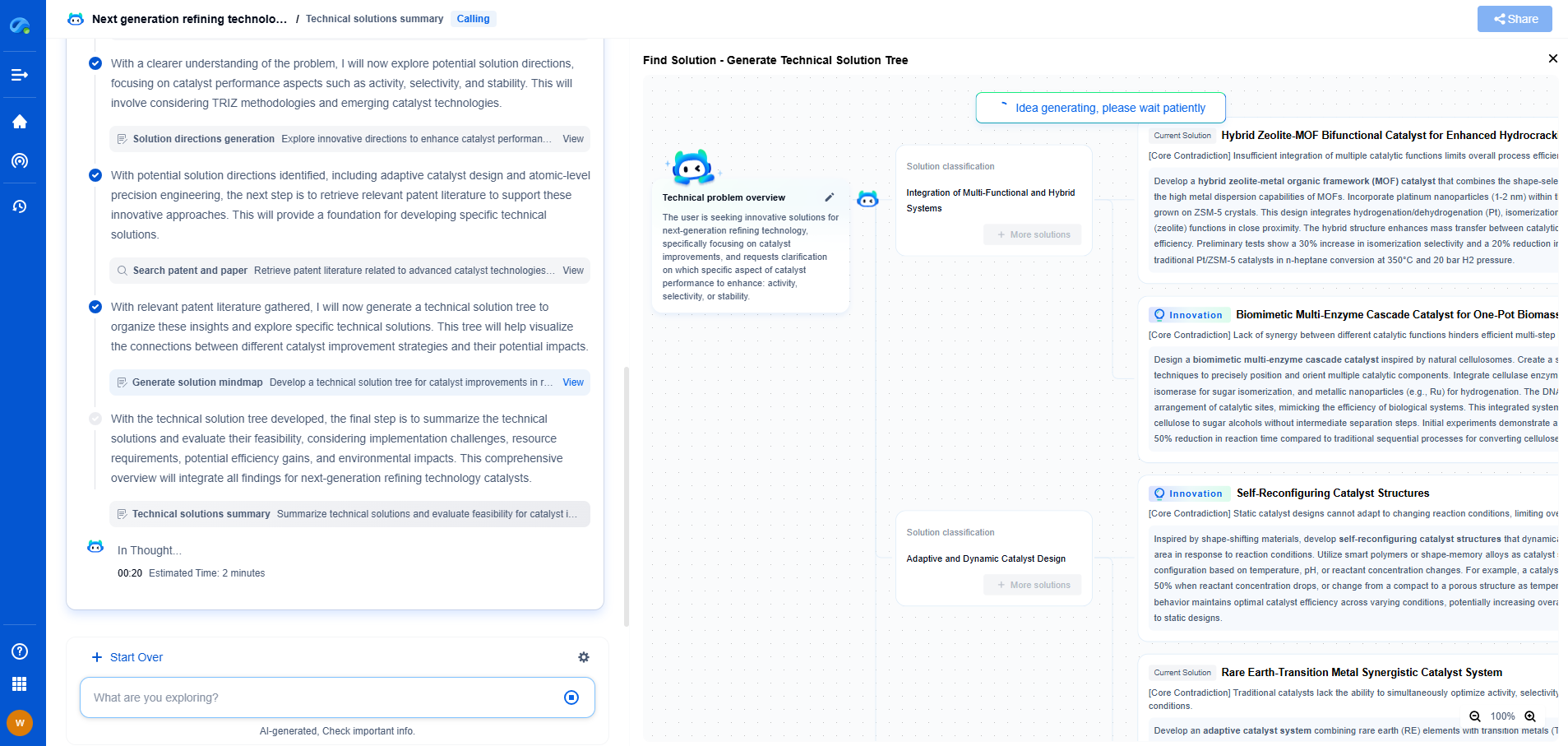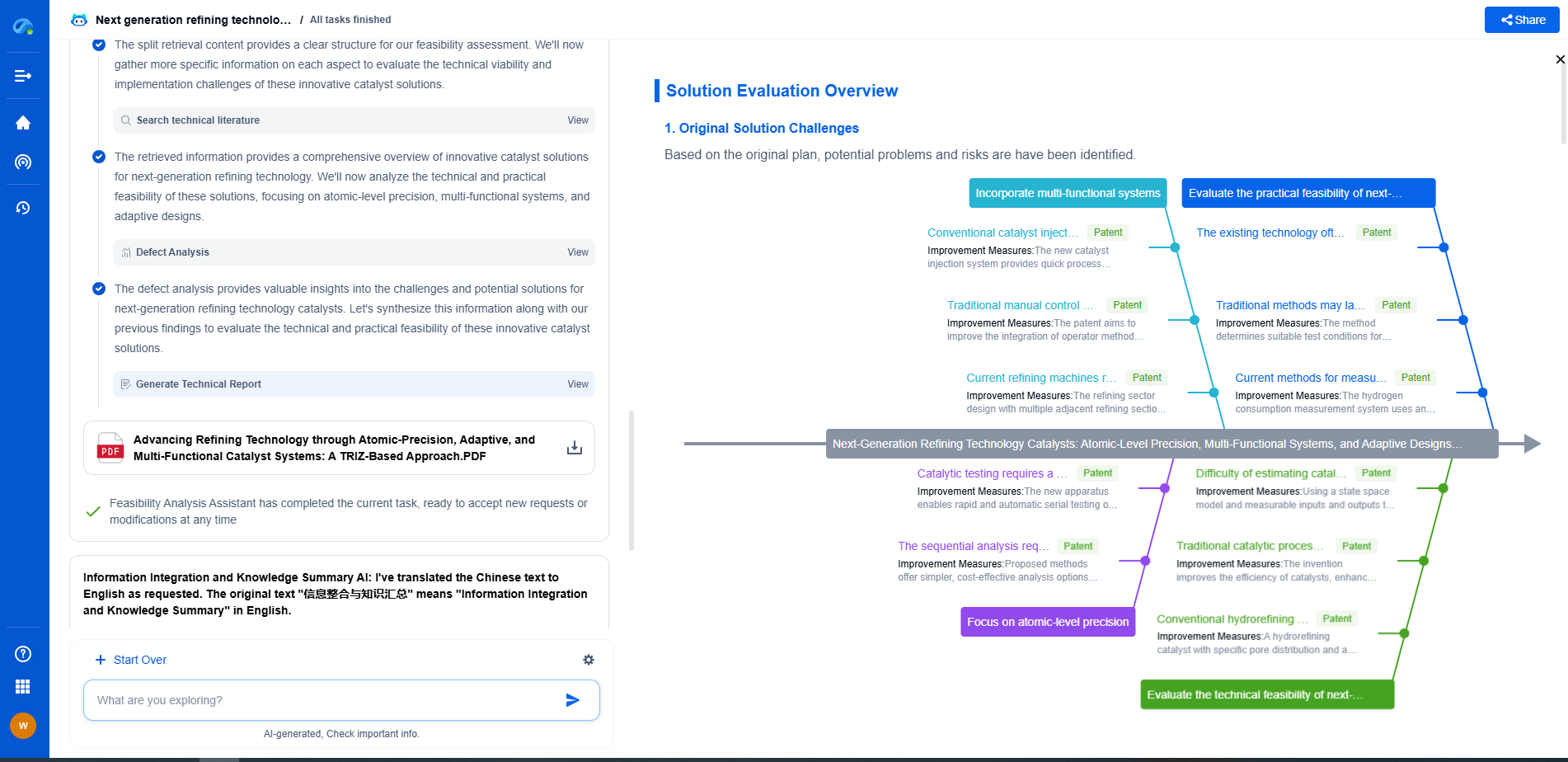Level Gauge Ice Buildup: Preventing Cryogenic Measurement Failures
JUL 21, 2025 |
In the world of cryogenics, precision and reliability in measurement are paramount. Level gauges are crucial tools used to measure the volume of cryogenic liquids like liquid nitrogen, oxygen, and other gases stored at extremely low temperatures. However, these measurements can be severely compromised by the buildup of ice on the level gauges. Ice formation, a common issue, can lead to inaccurate readings and potential system failures.
The Science Behind Ice Formation
To effectively tackle the problem of ice buildup, it is essential to understand the science behind it. Cryogenic storage tanks often operate at temperatures well below freezing, creating an ideal environment for water vapor in the air to condense and freeze upon contact with the cold surfaces of the level gauges. This process is known as frost formation, and it can lead to the accumulation of thick ice layers, which interfere with the gauge's sensors and accuracy.
Effects of Ice Buildup on Measurement Accuracy
Ice buildup on level gauges can have several detrimental effects, including:
1. Sensor Interference: Ice can obstruct the sensors, leading to false readings or complete measurement failures.
2. Increased Maintenance: Frequent ice removal is necessary, increasing the operational costs and downtime.
3. Safety Risks: Inaccurate measurements can result in overfilling or depletion of cryogenic tanks, posing safety hazards.
Preventative Measures: Design and Material Considerations
To prevent ice buildup, careful consideration must be given to the design and materials of level gauges. Here are some preventative measures:
1. Use of Insulating Materials: Insulating the gauge and its components can reduce the rate of heat transfer, minimizing frost formation.
2. Heated Components: Incorporating heating elements in the design can keep the surfaces above the dew point, preventing water vapor from freezing.
3. Selection of Non-Icing Materials: Using materials less prone to ice adherence can mitigate the formation of ice layers.
Regular Maintenance and Monitoring
In addition to design considerations, regular maintenance and monitoring are crucial in preventing ice buildup. Implementing a routine cleaning schedule can help ensure that gauges remain free of ice. Additionally, monitoring humidity levels within the storage area can provide early warnings of conditions conducive to ice formation.
Technological Solutions: Advanced Sensor Technology
Advancements in sensor technology also offer promising solutions for preventing cryogenic measurement failures due to ice buildup. For instance, radar and ultrasonic level gauges can provide accurate readings without direct contact with the liquid, reducing the risk of ice interference. Implementing these advanced technologies can enhance reliability and reduce maintenance needs.
Conclusion: The Path Forward
Preventing ice buildup on cryogenic level gauges requires a multi-faceted approach combining design innovation, regular maintenance, and advanced technology. By understanding the science of ice formation and implementing effective preventative measures, we can ensure accurate cryogenic measurements, improve safety, and reduce operational costs. As the field of cryogenics continues to evolve, adopting these strategies will be critical in overcoming the challenges posed by ice buildup and ensuring the efficiency and reliability of cryogenic systems.
As clean energy and decarbonization drive new breakthroughs in hydrogen storage, CO₂ transport, and alternative gas carriers, keeping pace with technical trends and patent activity is critical to staying competitive.
Patsnap Eureka helps innovators in compressed gas storage, high-pressure tank design, gas sensor systems, and pipeline materials accelerate research by offering instant, AI-powered insights into global patents, related technologies, and emerging white spaces.
🚀 Bring speed, precision, and strategic foresight to your innovation and IP decision-making in the gas transport sector—try Eureka today and unlock a smarter path forward.
- R&D
- Intellectual Property
- Life Sciences
- Materials
- Tech Scout
- Unparalleled Data Quality
- Higher Quality Content
- 60% Fewer Hallucinations
Browse by: Latest US Patents, China's latest patents, Technical Efficacy Thesaurus, Application Domain, Technology Topic, Popular Technical Reports.
© 2025 PatSnap. All rights reserved.Legal|Privacy policy|Modern Slavery Act Transparency Statement|Sitemap|About US| Contact US: help@patsnap.com

